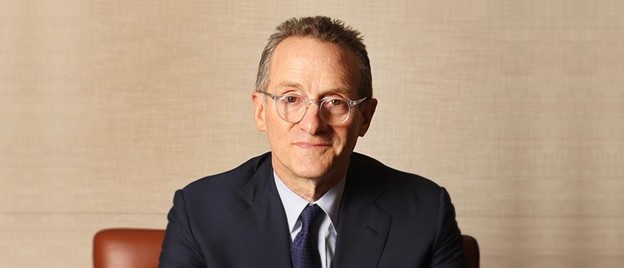We are approaching the end of an extraordinary year, one that has left many of us – citizens, investors, employers, workers, and parents – feeling whipsawed, anxious and confused. Much of that comes from the sense that we can’t figure out what’s behind this year, so we don’t have much hope about managing, much less thriving in, the year ahead.
I entirely agree with your feelings, but I’m here to suggest that you take a deep, cleansing breath. We’re doing better than you know, and if we keep our wits about us, we’re going to do okay.
In this two-topic article, I will first address the mythical Manager G brought up by Howard Marks. The second part compares the diversified portfolio in America versus the rest of the world to show how thankful we have to be this season despite the carnage in the portfolios.
1. Howard Marks, What Really Matters, and the search for the Asymmetrical Manager
In his recent memo, What Really Matters, Howard Marks gave us yet another set of invaluable investment lessons. Avoid the event and economic noise, don’t pretend to know stuff when you don’t, avoid short-term trading and poor performance measures, and for the majority, the passive indices are just fine.

Howard Marks, co-founder of Oaktree Capital, author of The Most Important Thing: Uncommon Sense for the Thoughtful Investor (2011)
None of these are new to the readers at MFO, but it’s always good to get an erudite, timely, and thoughtful perspective on things that don’t work. When those lessons come from a market guru like Marks, we listen ever more carefully.
If you are inclined to beat Mr. Market, Marks offers some advice. As I wrote in my opening column for MFO in Feb 2022, each investor must ask themselves, What is Your Edge? Only if and when you find that elusive Edge, do you have yourself a ball game.
Presents that Howard Marks left under the tree for you
I like to say, “Experience is what you got when you didn’t get what you wanted.”
There are old investors, and there are bold investors, but there are no old bold investors.
Investment success doesn’t come from buying good things but rather from buying things well.
We have to practice defensive investing, since many of the outcomes are likely to go against us. It’s more important to ensure survival under negative outcomes than it is to guarantee maximum returns under favorable ones.
Being too far ahead of your time is indistinguishable from being wrong.
What the wise man does in the beginning, the fool does in the end.
There’s only one way to describe most investors: trend followers. Superior investors are the exact opposite. Superior investing requires second-level thinking—a way of thinking that’s different from that of others, more complex and more insightful.
As I’ve indicated earlier, the riskiest thing in the world is the belief that there’s no risk. By the same token, the safest (and most rewarding) time to buy usually comes when everyone is convinced there’s no hope.
Somebody comes into your office and says, ‘I’ve been managing money for 30 years, I’ve made 11% a year, and I’ve never had a down month. Your job is to say, ‘That’s too good to be true, Mr. Madoff.’
Marks’ memo referred to asymmetrical returns. He gave examples of theoretical managers, and at the pinnacle was Manager G. She possesses so much investment alpha that when the market is up 10%, she is up 20%. And when the market is down 10%, she surprises us all, and instead of being down with the market, she is actually up 5%!!
Does she exist? More specifically, does she exist in the mutual fund world? Members of the MFO Discussion Board reflected on this topic and concluded that Manager G might be a mythical character, much like Loch Ness or Big Foot.
Fund mandates, fund managers, and the market environment change with time. To search for Manager G is to invest significant time staying on top of all the changes. Maybe the right practical question is not if there is that magical manager, but what kind of market environment might allow for some talented managers to finally show their skill.
Will interest rates be more normalized going forward? Will the financial sorcery of the last twenty years be less prominent in the future? Will dividends and profit matter once again? Or will investors be sucked back into chasing phantom returns from completely wasteful schemes? A thoughtful manager cannot be expected to outperform the mania of the dotcom bubble or the 2020-2021 free-money era.
Readers of Mutual Fund Observer are uniquely empowered to have an informed opinion on this subject. The very versatile MFO Premium website is a gold mine for manager and fund metrics and profiles. Through the monthly commentaries, David Snowball and my fellow columnists have dived deep into funds that have the potential of outperformance. The active and buzzing Discussion Board leaves no stone unturned in discussing noteworthy (good and bad) fund managers.
My promise to the community was to be open-minded about active management. Research tells me that under the hood of 5900 funds, there are indeed a handful of funds, where the managers are thoughtful, battle-tested, outperform relative to their indices, and produce absolute returns. These managers are likely to be active investors in spots where passive indices are constructed poorly, sport heavy concentrations in sectors, and construct long stock and bond portfolios while avoiding the land mines.
Stay thirsty, my friends. And pray that common sense returns to our nation’s financial infrastructure and participants. That will help us all continue to reap the bounty of America The Beautiful.
2. America The Beautiful
Diversified portfolios invested in US stocks and bonds are down about 13-15% on the year so far. Inflation has reduced our purchasing power by another 7-8% this year alone.
Assuming we agree that we knew it was coming, there is still the problem of “What would you have done about it?”
Let’s ask the inverse question. Who made money this year, and would we have done what they did? By and large, four categories of investors won:
-
- Energy Equity investors
- Value funds & Berkshire Hathaway
- Investors who shorted bonds heavily
- A handful of esoteric and exceptionally talented stock and bond managers (at hedge funds and mutual funds)
Which of these cases apply to you? Would you have gone all in on energy stocks? Would you be like Stewart Horejsi and put all your money in Berkshire? Would you have known in advance which active fund managers would have zigged when the market zagged? And would you have had the gumption to invest enough with those fund managers, knowing full well that they underperformed their asset classes in the last few years? Or would you have taken to trading bond futures for a living?
The good part about knowing what it takes to win in a year like 2022 is that we can see that even if we had the blueprint, we might not have executed it well.
The reason people have stuck to the basic, diversified portfolio for a few decades now is that the damn thing works about as well, maybe better, than one can expect it to. We take the diversified portfolio for granted for one principal reason – it’s an American asset portfolio. We need to look at the rest of the world to appreciate what we have here. The kind of American capitalism, financial markets, and institutional strength that we have come to take as a given is not easily replicated everywhere.
This year alone, the US Dollar Index is up 11%, which means if you are lucky enough to travel abroad, your trip is discounted by 11%.
Compare the plight of the citizens of Argentina, where the Peso is down 62% this year versus the dollar. Or the Sri Lanka Rupee, down 81% on the year, and out of fuel supplies. In Turkey, the Lira is down 40% this year, and in Egypt, the Pound is down 56% against the US Dollar. Does it even matter what a diversified portfolio would look like in these countries? Investment returns are meaningless when the currency makes all of your assets worthless in purchasing power terms.
Across all of Europe, with the Euro down 10% versus the US Dollar, inflation of 8-10%, and diversified investment portfolios down 10%, the loss of purchasing power, locally and in US$ terms, is very real. We are talking about the developed world, not an emerging market country.
Whether one takes the 20% depreciation of the Japanese Yen, the 10% in Australia/New Zealand, or the 13% selloff in the Chinese Renminbi, the news is simple. If you don’t have US dollars, and you don’t have a US dollar portfolio, the year 2022 has been far cruel to the individual saver.
Even in the UK, America’s closest financial system equivalent, despite the commodity-heavy stock market is up 7% on the year, a theoretical 60/40 portfolio would be down 11% in GBP and down 22% in US$ terms.
There are a handful of countries that are OK – Mexico from reshoring and India because of its secular growth – but they are truly the (lucky) exceptions.
When we understand the performance of diversified American stock and bond portfolios through the lens of a worldwide meltdown in purchasing power and investment portfolios, we realize how beautiful the American system is.
What is not ok is to rely too much on that benevolence. The world is in a lot of pain, and this time around, there are no central banks to the rescue and no government money-printing machines being primed. The pain in the rest of the world will manifest itself in the USA in one form or another.
All too often, we disregard Howard Marks’ advice. We try to find that one stock or try to trade around too much.
Investors should remember that asset allocation decides the majority of returns. While we should think about how much we want in stocks versus bonds, we should also decide how much we want in the Capital Markets at all, rather than earning a cool 5% in the Bank CD.
Happy Holidays to all of the readers, and thank you for taking the time to share the investment journey together with the MFO columnists.
